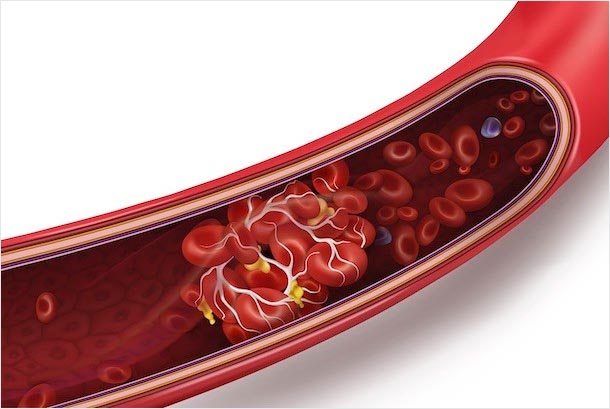
A blood clot blocking a vein. IMAGE: ISTOCK/@DEVRIMB
Modeling safer, more effective cardio implant devices
10/26/2020
By Jamie Oberdick
UNIVERSITY PARK, Pa. — A Penn State researcher has received a $459,000 grant from the National Science Foundation (NSF) to develop a computer model that could lead to safer implantable cardiovascular devices.
While heart pumps, heart valves, stents, catheters and similar devices are successfully implanted into thousands of patients each year, the formation of blood clots remain an ever-present threat to the health of these patients.
“The computer model we are creating would predict when a clot that develops on an artificial surface associated with any cardiovascular device would break off and move downstream,” said Keefe B. Manning, associate dean of the Penn State Schreyer Honors College, professor of biomedical engineering, director of the Penn State Artificial Heart and Cardiovascular Fluid Dynamics Lab and principal investigator of the study. “When these clots break off, they can block blood vessels.”
These blockages can cause a heart attack, a stroke or an infarction, which is tissue death caused by blood supply obstruction. They can also prevent the implanted devices from functioning properly. According to Manning, a serious challenge to finding a solution to medical device thrombosis is that it is difficult to investigate how clots form and travel, leading to a limited understanding of the complex interactions between the device and the body that lead to clots.
“The key, and most important, gap in understanding of this problem is that different cells, protein and biochemical species associated with thrombosis respond to fluid shear stresses differently,” Manning said. “And given how some are altered with biochemical reactions, their respective fluid stress response also changes.”
Shear stress is the frictional force generated by blood flow on the walls of either the blood vessels or devices. The computer model that Manning is developing with his research group will simulate how these blood flow forces and biochemistry in the devices interact to result in clotting. The goal is to create a tool to model this by incorporating biochemical surface interactions between blood and synthetic materials; the kinetics of the coagulation cascade, which are the steps leading to a clot; and the viscoelastic properties of blood clots. Using supercomputing resources provided by the NSF, Manning’s group will develop the computational model and validate it with experimental data.
Manning plans to produce a model that can contribute to the development of safer and more effective cardiovascular health devices with lower development costs and a shorter time to market.
“If the tool is robust enough, it could be used during the design phase of cardiovascular devices to improve the technology and minimize impact in patients,” Manning said.



